Debating the connectivity of tomorrow
Prysmian Sponsor and supporter of FT/ETNO Summit
Prysmian Sponsor and supporter of FT/ETNO Summit
SEPTEMBER 2017
Prysmian participated to the 8th edition of the FT-ETNO Summit, hosted at the SQUARE Meeting Centre at Brussels. The Summit gathered leading policymakers, regulators, industry executives and investors from Europe and beyond to discuss and debate the role and the future development of the communication industry in the world of tomorrow.
The meeting took place at a very meaningful time: on the one hand, in the last years technology and mobility has brought about unprecedented opportunities and challenges; on the other one, Europe is moving closer and closer to review of the Union’s telecommunication rules that will set the framework for progress in the years to come.


The Digital Single Market strategy highlights the availability of reliable, trustworthy and high-performing networks as key to achieve its goals with the promise to boost investment in very high speed broadband networks.
The digital transformation can prove to be the greatest creative disruption of the modern industrial era since the arrival of Henry Ford’s assembly line in 1913. This awareness is shared by the European Commission as well, as underlined by Mariya Gabriel, Commissioner for Digital Economy and Society, European Commission: “My main message is a wake up call to look at the big picture and to keep the ambition of our founding fathers. We need to concentrate our efforts towards connectivity, which is paramount. My goal is to catch up with today leading countries, such as US, Japan and South Korea”.
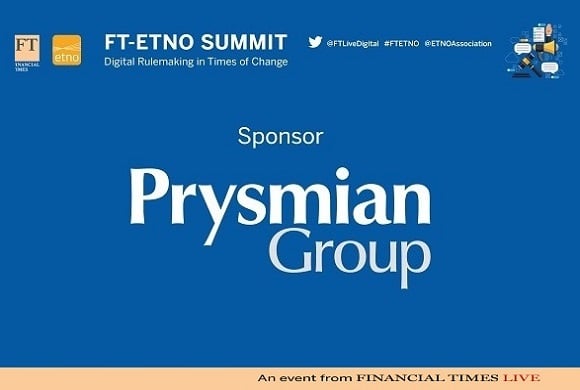
At the present time, fixed broadband is available to 98% of Europeans, and 76% of European homes can access high-speed broadband (at least 30 Mbps). 4G mobile networks cover on average 84% of the EU’s population. Moreover, 74% of European households subscribe to fixed broadband, and over one third of these connections are high-speed. The number of high-speed connections went up by 74% since 2014.
As a leading company in this field, we share the comments advanced by Jeremy Rifkin, Sustainability Adviser to the European Commission Presidents, during his keynote lecture, in particular about the need of a sector approach that must take into account the differences in return to investment based on the targeted areas. With the important addition: the European Union can be the ideal location to explore the opportunities of modern connectivity and shared mobility thanks to the elimination of country borders, since “technology and digital infrastructures don't like borders. They just like open space", as Rifkin stated.
During the Summit, regulators, industry executives and journalist debated on the reforms to the Electronic Communications Code issued in October 2016, the policy priorities of the new European Parliament and their impact on European Telecoms, Media and technology.
Two main subject were touched: the importance of a reliable optic fibre network in Europe for the development of 5G mobile networks and the consequences of the loosening of regulations in the US on the European scenario.
From Prysmian’s point of view, the first is pivotal, while the second mainly relapses on governments and parliaments. In terms of mobile connectivity, the focus of the European Commission in its communications is an action plan on the roll-out of 5G, for the realization of which the only long term solution relies on fibre networks. The Summit in Brussels showed that both the European Commission and the industrial sector are now aware of this situation, and are ready to move a step beyond the concept of technology neutrality.
The choice of optical fibre, provided that the appropriate choice of components is made, has a number of very positive implications. Some of these were highlighted in the speech given by Prysmian Group’s CEO Valerio Battista during his interview with Daniel Thomas of the Financial Times.
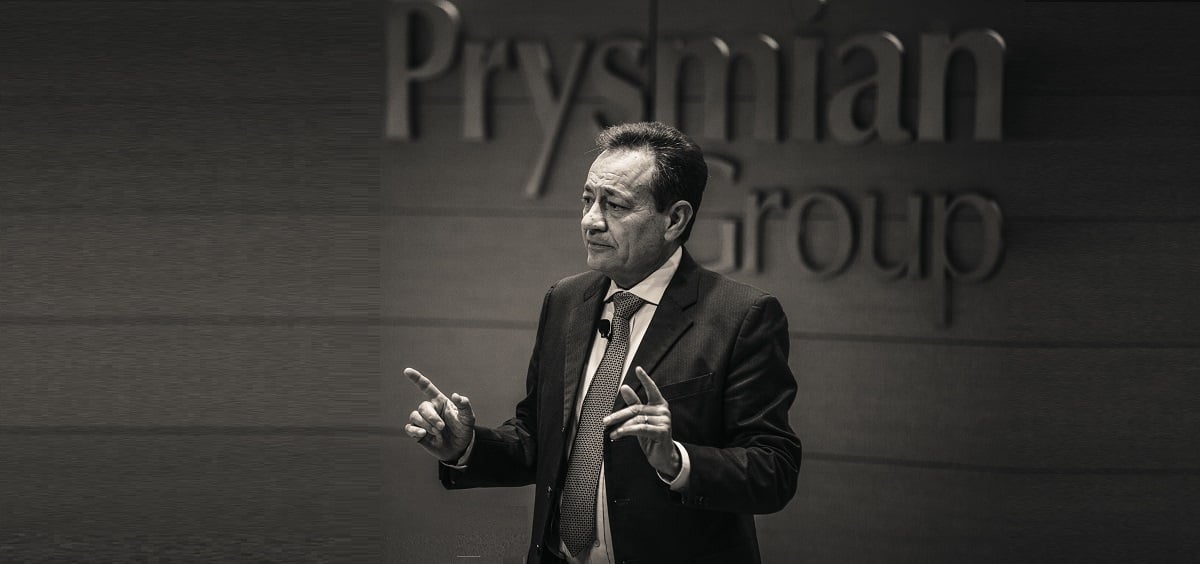
First of all, the choice of optical fibres means investing in the infrastructure that hold the highest chances of still being able to cope with the connectivity needs, 20 to 30 years for now: for investors with the appropriate financing capacity, this is the best way to optimize the Net Present Value of the asset. Keeping in mind that “if the private sector doesn’t have the power to invest, they need to leave the floor to the public”.
Talking about the connectivity of the future, Valerio Battista underlined that “business is based on fibre. The last mile can be based on cables, antennas, satellite, but the substance doesn’t change, the base is always fibre. Moreover, the network Europe is going to build must be future-proof” underlined the CEO, “robust so to last in time, with quality and performance able to manage the future demand, growing at a very fast pace”.
What does Mr. Battista refer to while talking of “future-proof networks”?
First of all, that “when we decide to build an infrastructure it has to stay for 20-30 years, therefore quality of products is essential. Through quality, we can build reliable networks, with no interruptions in the services and a very low latency”.
It is evident that, when talking about internet connections, bandwidth is the crucial subject, since it determines the performances of the web. Yet, latency – the delay between the actual transfer of data and the instructions to do so – may interfere with the speed of internet transmission even more than the bandwidth. Sometimes the presence of bottlenecks across the line can erase the benefits of the increased bandwidth, causing, for instance, a long wait for the user while loading a website. But, let’s imagine the same situation in a world of self-driven cars. What would happen then?
“Reliability is the foundation on which all other improvements are built”, continued Prysmian Group’s CEO, “Our optical fibre cables are a key component in designing networks that can handle the rapid changes to come”.
The second talking point of Valerio Battista’s speech was about the importance of passive components, their cost and required investments. The cost of the passive infrastructure is around 12% of the overall cost of a project, while the cost of installation and civil works is around 50%. Faster connections and easier to install products can help lowering this overall cost. That is why Prysmian’s efforts in innovation are mainly focused in three directions: “In first place, making the products even more robust and capable for installations in challenging environments; secondly, decreasing the size of products to enable their installation in congested places; third, making the installation of the products easier and faster”.
The third point referred to the less-discussed topic of connectivity: the security of networks. It is obvious that users, butv also Governments and institutions, want to be sure that data travelling on the network are safe. Contrary to phone lines and aerial transmission, “eavesdropping on traffic within a fibre cable is, in theory, impossible”.
A perspective shared by the European Commission as well, as stated by Andrus Ansip, Vice-President for the Digital Single Market, European Commission: “We are in a decisive period of European history for what concern connectivity: we can decide to lead the transformations, through the efforts of all member countries, or we’re going to lose the game on telecommunication and 5G. A common regulation for funding and infrastructure development is needed in the near future”.
The world stands on the edge of a digital revolution, and European countries and their citizens must be equipped to deal with an array of new, unpredictable challenges. Nowhere our vision to choose a future-proof solution is more appropriate than in our home continent.
We are committed to playing our part in this exciting transformation, as the results of the meaningful FT/ETNO Summit 2017 underlined once again.

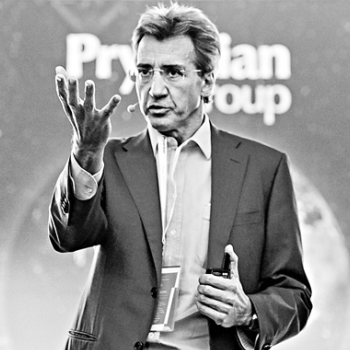
MAKE IT PROGRAM

CORPORATE

FAST TRACK PROJECT
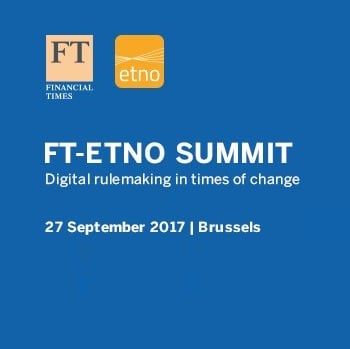
FT-ETNO SUMMIT 2017
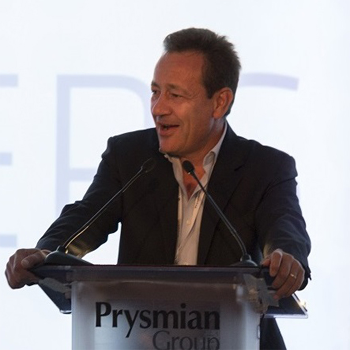
GRADUATE PROGRAM
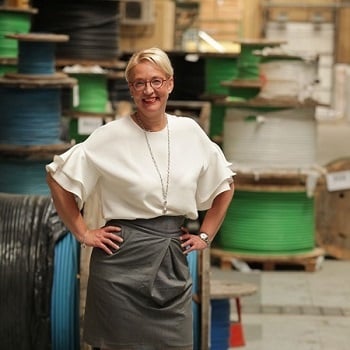
PEOPLE